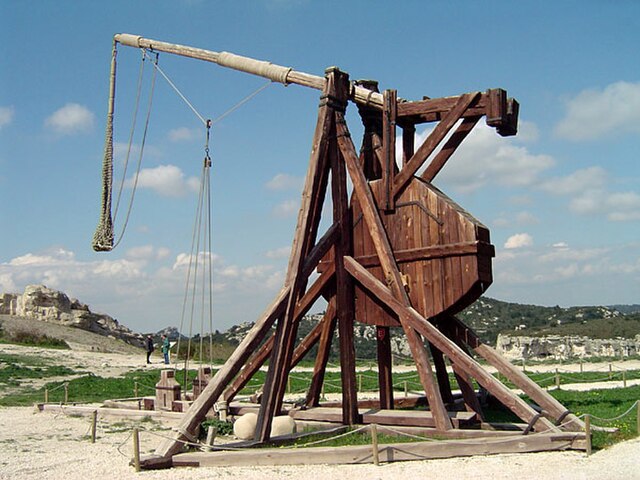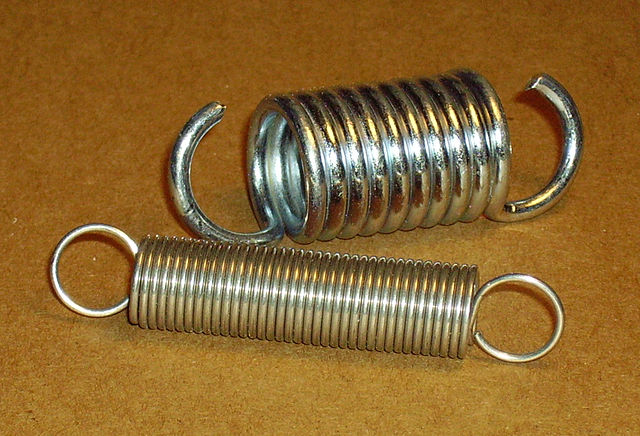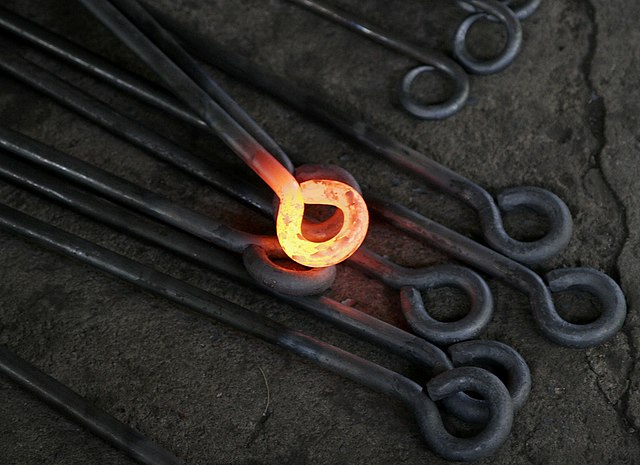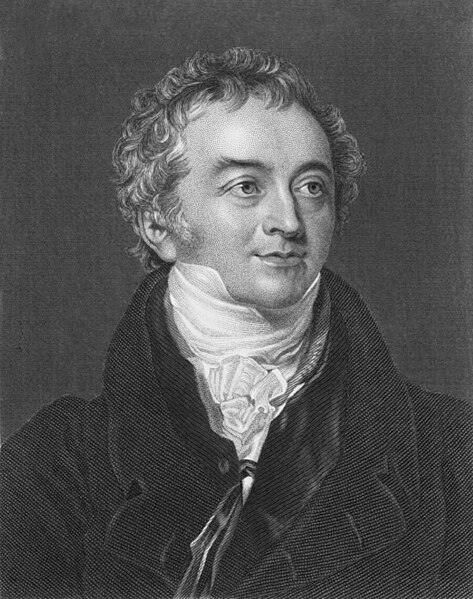In physics, potential energy is the energy held by an object because of its position relative to other objects, stresses within itself, its electric charge, or other factors. The term potential energy was introduced by the 19th-century Scottish engineer and physicist William Rankine, although it has links to the ancient Greek philosopher Aristotle's concept of potentiality.
In the case of a bow and arrow, when the archer does work on the bow, drawing the string back, some of the chemical energy of the archer's body is transformed into elastic potential energy in the bent limb of the bow. When the string is released, the force between the string and the arrow does work on the arrow. The potential energy in the bow limbs is transformed into the kinetic energy of the arrow as it takes flight.
A trebuchet uses the gravitational potential energy of the counterweight to throw projectiles over two hundred meters
Springs are used for storing elastic potential energy
Archery is one of humankind's oldest applications of elastic potential energy
In physics, energy is the quantitative property that is transferred to a body or to a physical system, recognizable in the performance of work and in the form of heat and light. Energy is a conserved quantity—the law of conservation of energy states that energy can be converted in form, but not created or destroyed. The unit of measurement for energy in the International System of Units (SI) is the joule (J).
A plasma globe, using electrical energy to create plasma, light, heat, movement and a faint sound
In a typical lightning strike, 500 megajoules of electric potential energy is converted into the same amount of energy in other forms, mostly light energy, sound energy and thermal energy.
Thermal energy is energy of microscopic constituents of matter, which may include both kinetic and potential energy.
Thomas Young, the first person to use the term "energy" in the modern sense








